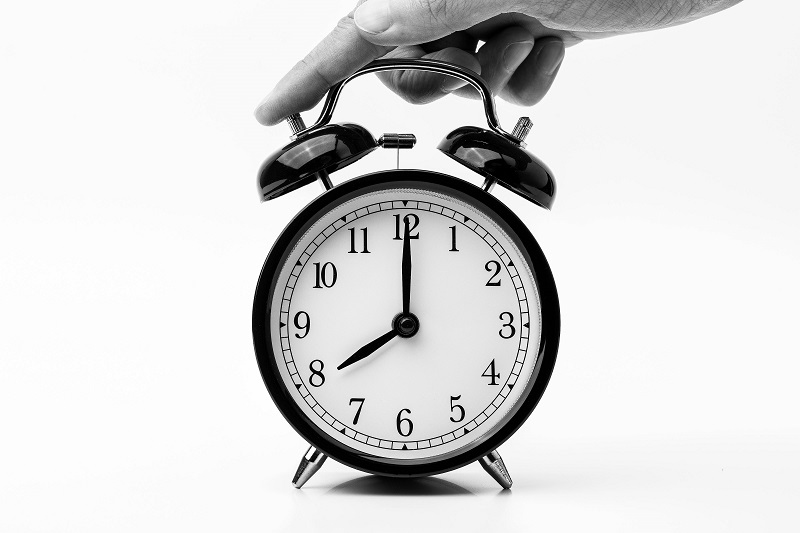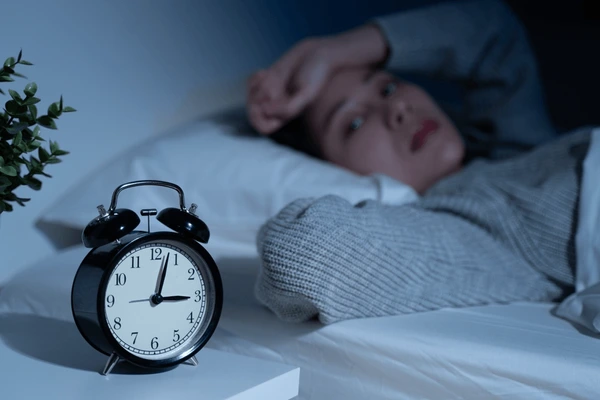If you’ve ever laid in bed wondering whether you’re taking too long to drift off—or maybe falling asleep suspiciously fast—you’re not alone. We’ve all been there, counting sheep or replaying the day in our heads. Most healthy adults fall asleep within 10 to 20 minutes of lying down, a timeframe sleep experts consider normal. This period, known as sleep latency, can reveal a lot about your sleep health and overall well-being, and understanding it is a great first step. If you’re struggling, learning how to fall asleep fast can offer some immediate relief.
What Is Sleep Latency?
So, what exactly is sleep latency? It sounds technical, but it’s simply the term sleep specialists use for the time it takes you to go from fully awake to the very first stage of sleep. It’s that in-between zone when your thoughts start to drift and the world fades away.
It’s not about how long it takes to get into a deep sleep or REM sleep; it’s just about crossing the finish line from wakefulness into sleep. Think of it as the runway before your brain takes off for the night. Doctors use this measurement to get a clearer picture of your sleep quality and spot potential issues.
The Normal Time to Fall Asleep
For most of us, the sweet spot for sleep latency is between 10 and 20 minutes. Hitting this window usually means your body has built up just the right amount of sleep pressure throughout the day and your internal clock, or circadian rhythm, is on track. You’re tired enough to sleep, but not so exhausted that you crash.

Of course, life happens. If it occasionally takes you up to 30 minutes to doze off, especially during a stressful week, that’s generally considered fine. It’s the consistent patterns outside this range that are worth paying attention to.
What It Means If You Fall Asleep in Under 5 Minutes
Falling asleep the second your head hits the pillow might seem like a superpower, but it often signals the opposite of good health. If you’re consistently out in under five minutes, it’s a strong sign that you’re sleep-deprived.
Your body isn’t smoothly transitioning to rest; it’s crashing from exhaustion. This can happen if you aren’t getting enough hours of sleep or if the quality of your sleep is poor. Sometimes, it can also point to an underlying issue like sleep apnea, which causes excessive daytime sleepiness because it disrupts breathing and forces you to wake up repeatedly throughout thenight.
What It Means If It Takes Over 20-30 Minutes
On the flip side, regularly staring at the ceiling for more than 30 minutes can be incredibly frustrating and may be a sign of sleep onset insomnia. My mind used to race the most at night, and it felt impossible to switch it off.
Common culprits include:
- Stress and anxiety: A worried mind has a hard time shutting down.
- Poor sleep hygiene: Things like using your phone in bed or drinking coffee too late.
- An uncomfortable environment: A room that’s too hot, too bright, or too noisy.
- Stimulants: Caffeine, nicotine, or even a big, heavy meal close to bedtime.
If you consistently take 40 minutes or more to fall asleep, it might be a good idea to chat with a doctor or sleep specialist.
Factors That Affect How Long It Takes to Fall Asleep
How quickly you fall asleep isn’t just about how tired you are. It’s a mix of different factors, and what’s normal for you can change based on your age, habits, and even your bedroom setup.
Age and Sleep Onset Time
Sleep needs change as we get older.
- Children and teenagers often fall asleep faster, sometimes in just 5-10 minutes, because their growing bodies and brains require more sleep.
- Adults typically land in that 10-20 minute range.
- Older adults (60+) might find it takes them 30 minutes or longer. This is a natural part of aging, as sleep patterns and the body’s internal clock can shift over time.
Gender Differences in Sleep Latency
Research has shown that women sometimes take a bit longer to fall asleep than men. This can be due to a few things, like hormonal shifts during menstrual cycles or menopause. Women also report higher rates of anxiety and stress, which are major obstacles to falling asleep quickly.
Sleep Environment and Comfort
Your bedroom should be your sanctuary for sleep. If it’s not, your brain will have a hard time relaxing. A room that is too hot or cold can disrupt your body’s temperature regulation, which is key for sleep. Noise and light are obvious distractions that keep your brain on high alert. Even an old, lumpy mattress or the wrong pillow can make it impossible to get comfortable enough to drift off.

Daily Habits and Sleep Hygiene
The choices you make during the day have a huge impact on your night. A late-afternoon coffee, an intense workout right before bed, or scrolling through social media can all prolong sleep latency. Having an inconsistent sleep schedule—like sleeping in on weekends—confuses your body’s natural rhythm. This collection of habits is often called sleep hygiene. If you often wake up and can’t get back to dreamland, you might want to explore some tips on how to go back to sleep.
How to Improve Your Sleep Latency
If you’re not happy with how long it takes you to fall asleep, the good news is you have a lot of control. Making a few simple tweaks can help you land in that ideal 10-20 minute window.
Establish a Consistent Sleep Schedule
This is the number one rule for a reason. Going to bed and waking up around the same time every day—yes, even on weekends—is the most effective way to regulate your circadian rhythm. When your body knows when to expect sleep, it starts producing melatonin, the sleep hormone, right on cue, making it much easier to doze off.
Create a Relaxing Bedtime Routine
Your brain needs time to shift gears. A 30 to 60-minute “wind-down” routine signals that it’s time to prepare for sleep. This could be anything that calms you:
- Reading a physical book (not on a screen!)
- Gentle stretching or yoga
- Taking a warm bath or shower
- Listening to calming music or a podcast
- Journaling to get thoughts out of your head

The key is to avoid stimulating activities like checking work emails or having a stressful conversation.
Optimize Your Sleep Environment
Turn your bedroom into a sleep cave: cool, dark, and quiet. The ideal temperature for sleep is around 65-68°F (18-20°C). Use blackout curtains or an eye mask to block out light, and consider a white noise machine or earplugs to drown out disruptive sounds. A comfortable mattress and pillows that support your sleeping position are also non-negotiable.
Limit Screen Time Before Bed
The blue light from phones, tablets, and computers is a major enemy of sleep. It tricks your brain into thinking it’s still daytime, which suppresses melatonin production. Try to put all screens away at least 30-60 minutes before you plan to sleep. If you absolutely must use a device, switch it to night mode or use a blue light filtering app.
Watch Your Caffeine and Alcohol Intake
Caffeine is a stimulant that can stay in your system for up to 8 hours. To be safe, it’s best to cut off all caffeine after 2 p.m. Alcohol might make you feel drowsy at first, but it ultimately fragments your sleep later in the night. It can also lead to fragmented sleep, waking you up in the middle of the night. If that happens, knowing a few tricks to fall back to sleep fast can be a lifesaver.
It’s All About Balance
Ultimately, the time it takes you to fall asleep is just one piece of the puzzle. Aiming for that 10-20 minute window is a great goal, but don’t stress if you have an off night. By focusing on consistent, healthy habits, you can create the right conditions for your body to drift off peacefully.
For more thoughts on wellness and finding what works for you, feel free to explore more at www.notonetype.org.


You may also like this
How to Go Back to Sleep After a Nightmare: 7 Proven Techniques That Work
Waking up in a cold sweat, heart pounding against your ribs, is a jarring way...
Nov
How to Go Back to Sleep: Simple Techniques That Actually Work
Waking up in the middle of the night and struggling to fall back asleep is...
Nov
6 Tricks to Fall Back to Sleep Fast When You Wake Up at Night
Waking up in the middle of the night can be frustrating, especially when your mind...
Nov
How to Sleep Fast in 2 Minutes: Military Method & Proven Tips
Struggling to fall asleep is something most of us have dealt with. You lie in...
Nov
How to Fall Asleep Fast: 12 Techniques That Work in Minutes
Tossing and turning at night is frustrating, especially when you’re exhausted but your mind won’t...
Nov
How to Sleep Early: Practical Steps to Shift Your Bedtime
Struggling to fall asleep early? You’re not alone. For years, I was a night owl,...
Nov